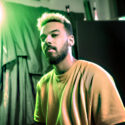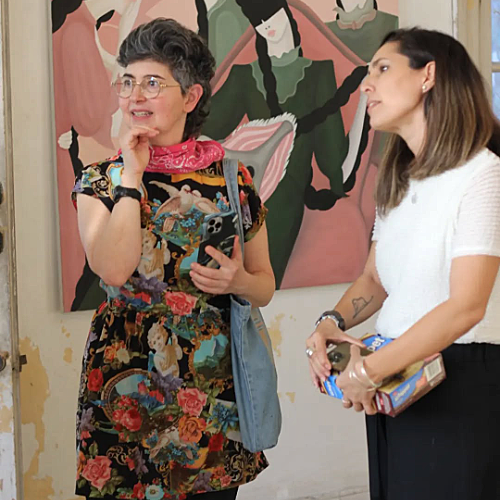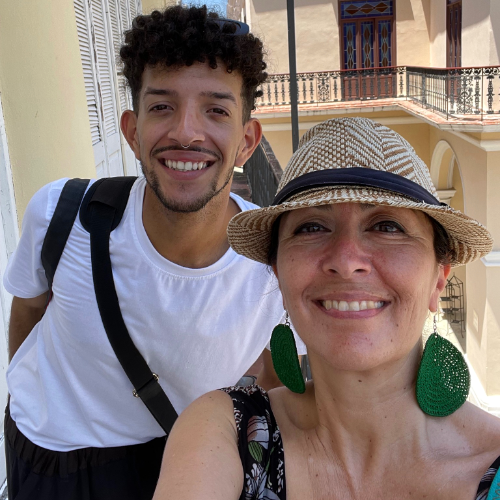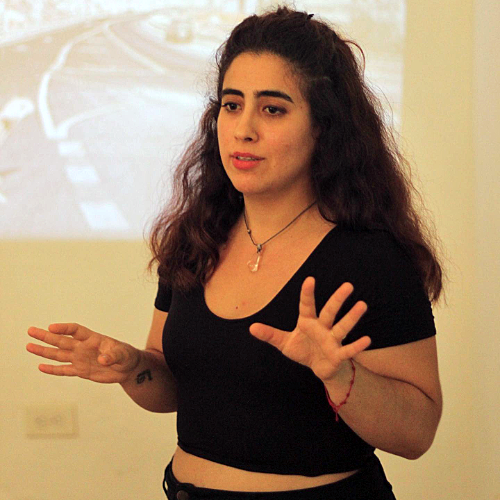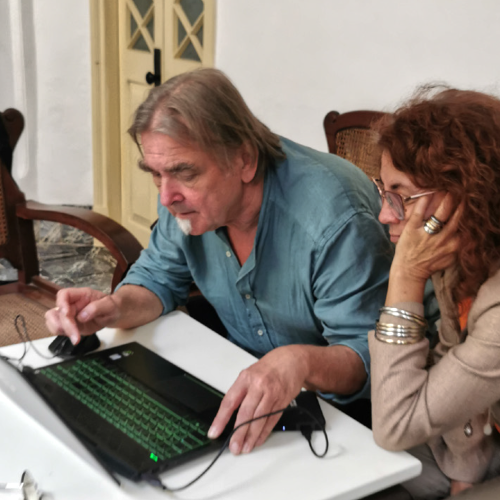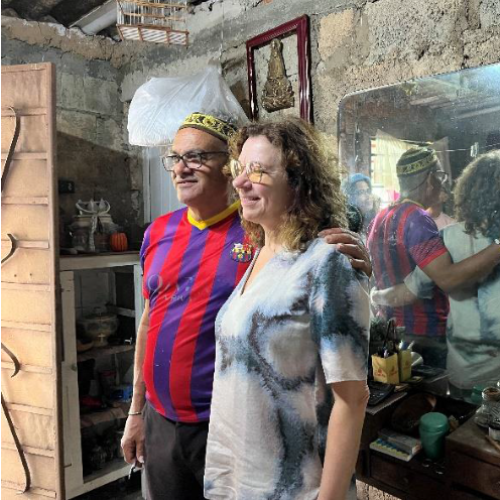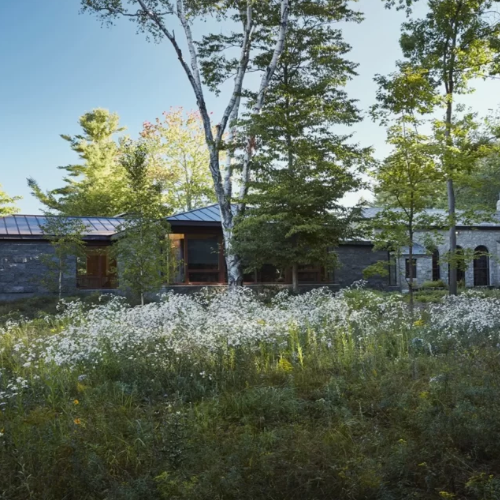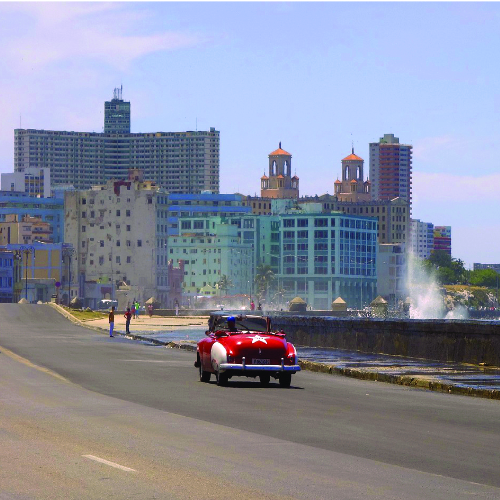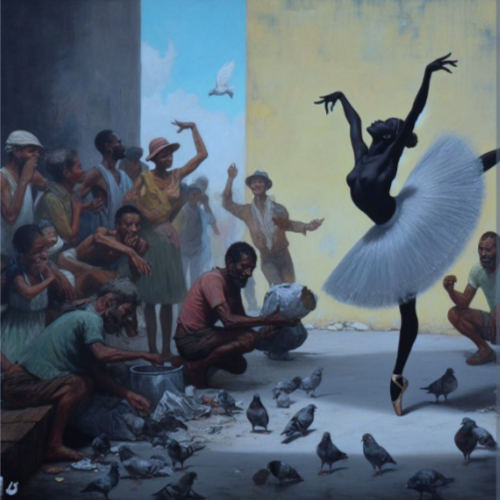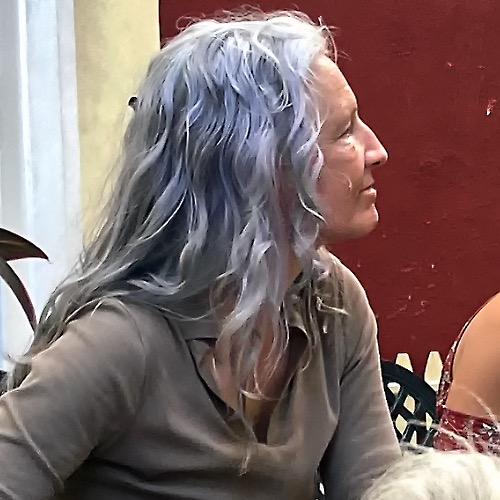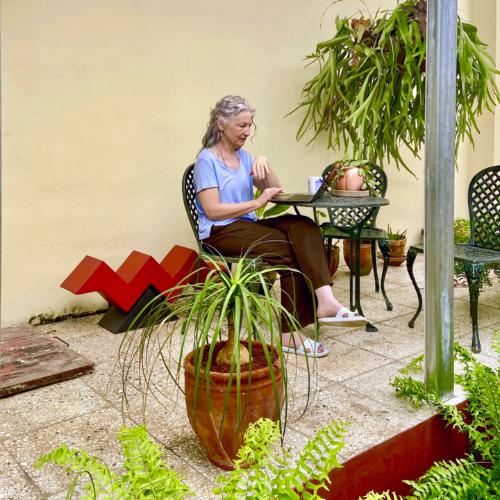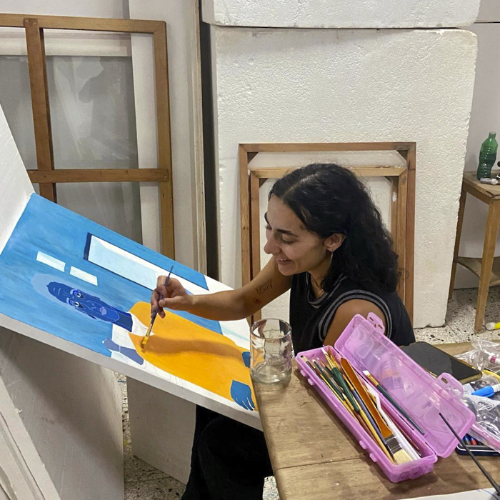First a list of what I had to work with. I got my Iphone with all of my AR apps and previous work preloaded onto it. With me I also brought acrylic paints, brushes, and about seven, 11” x 14” wooden panels to attempt making AR pieces. Two GoPros video cameras to get pictures and video of the trip in general. Can not forget my ETECSA wifi card. It looks like a scratch off calling card. It allowed me to use wifi in designated areas for about an hour at a time, per card. Public parks and parts of the Malecon is where I frequented. The signal is anything but strong in these areas. It would take at least three or four times of entering the scratch off code onto their proxy so that the wifi would actually kick on. If you weren’t careful the wifi would just kick your phone off of connection and still use up your minutes. With all of these tools I would attempt to create an augmented reality piece in Havana to see if it was even possible.
Now for the actual process of making the piece, I figured the best way was to keep it quick, straightforward and simple as possible. I decided to use a stop motion process like I had in the past. Stop motion works by taking a snapshot of each step along the art making process and then sequencing those images to make a final animation or video. In my case I would be doing this with a painting. Each brush stroke I take a snapshot and so on. Again, for the sake of simplicity, I decided to paint a flower with a blinking eyeball. The next step was setting up my work station. At my desk I set up one of my wooden panels in the center as my canvas, paints and brushes on the right side, and my GoPro set up directly above the painting and held with a tripod, so that I could take consistent photos. Two to three hours later I had about 360 photos of a painting of a blooming flower. Once I had these photos I sequenced all of these in Photoshop and made it into a quick animation of it blooming and blinking at the viewer. All of this turned out to be the easy part. The true hard part was working around the limited wifi connection to get the animation in the app and programmed to work on demand. The next morning I brought my laptop, phone, wifi card and painting to the wifi park to start programming the app to recognize my painting and superimpose my animation on to it. First thing I did was go to Google Drive to upload the animation to their cloud and then access it through my phone and download it onto the device.This first attempt failed due to the embargo from the U.S. Google drive does not allow use of its products in Cuba. Luckily another cloud service, Dropbox, was working. This entire time I am racing against the clock so that I don’t waste time on my wifi card. 5 minutes felt like 20 minutes. After uploading to dropbox from my laptop I had to then close everything down and reconnect to wifi from my phone and reupload the file to my phone. After that I had to access the app so that I could then program my phone’s camera to recognize the painting and overlay the animation onto it like a snapchat filter. I realized how difficult it was to produce this kind of work in Havana, let alone do a workshop on it. Augmented Reality wasn’t necessarily new to the art scene in Cuba but very hard to collect all of the materials to produce. Over the next week I would then make it my mission to try to make this process easier especially for artists new to the concept and technology.
Yusniel’s AR Creation:
Yusniel is a Cuban artist and professor who works a lot with technology. Yusniel attended the AR workshop and then made his own AR piece afterward. This was my first conversation in Cuba with someone who was very immersed in the tech world. I first met him at his apartment in Old Havana. We had a general conversation about augmented reality, where we think the industry is going and how I can plan the AR workshop. We also discussed how we used AR in the past. Yusniel’s knowledge of programming and coding vastly surpasses my own. He surgically installed an RFID chip in his hand so that he could use it to open the door to his apartment. I was so impressed. Yusniel gave me a really great idea of how artists are using technology in the Cuban art scene. The piece Yusniel created was as follows; He had a watch on that when recognized by his phone the face of the watch opens up like a book and the gears and mechanisms inside are revealed and moving, He did this in a two day timeline. Needless to say I was blown away yet again. He then showed me his entire process and gave me some ideas on how to integrate into my own work. I am very grateful that Yusniel and I were able to form a creative relationship.
